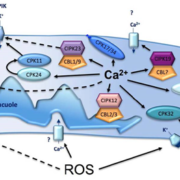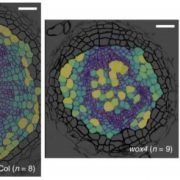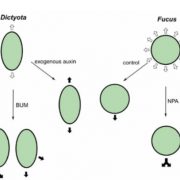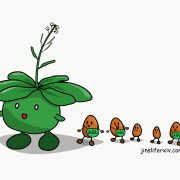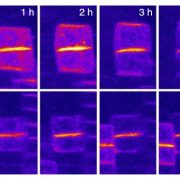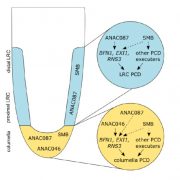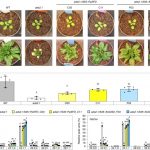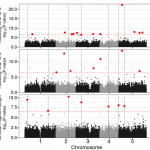Three-dimensional reconstructions of haustoria in two parasitic plant species in the Orobanchaceae (Plant Physiol)
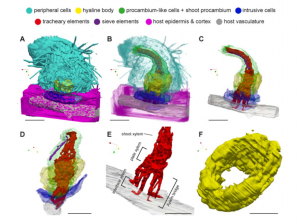 Parasitic plants form haustoria, which are specialized multicellular structures that penetrate into their host’s vasculature and act as conduits for nutrients. The molecular and genetic contributors to haustorium development and function are well described. Here, Masumoto et al. have provided new insights into haustorium formation and structure through 3D reconstruction of serial thin (1 micron) sections, looking at Striga hermonthica infecting rice and Phtheirospermum. japonicum infecting Arabidopsis. By identifying and color-coding each cell type, the authors were able to generate amazing 3D images of the interface between the host and parasite. By rendering different cell types transparent, the internal haustorial structures were made apparent. (Be sure to check out the supplemental movies.) Interestingly, there were some structural difference between the haustoria formed in the two systems, which will be interesting to address in other host-parasite pairs. (Summary by Mary Williams @PlantTeaching) Plant Physiol. 10.1093/plphys/kiab005
Parasitic plants form haustoria, which are specialized multicellular structures that penetrate into their host’s vasculature and act as conduits for nutrients. The molecular and genetic contributors to haustorium development and function are well described. Here, Masumoto et al. have provided new insights into haustorium formation and structure through 3D reconstruction of serial thin (1 micron) sections, looking at Striga hermonthica infecting rice and Phtheirospermum. japonicum infecting Arabidopsis. By identifying and color-coding each cell type, the authors were able to generate amazing 3D images of the interface between the host and parasite. By rendering different cell types transparent, the internal haustorial structures were made apparent. (Be sure to check out the supplemental movies.) Interestingly, there were some structural difference between the haustoria formed in the two systems, which will be interesting to address in other host-parasite pairs. (Summary by Mary Williams @PlantTeaching) Plant Physiol. 10.1093/plphys/kiab005


